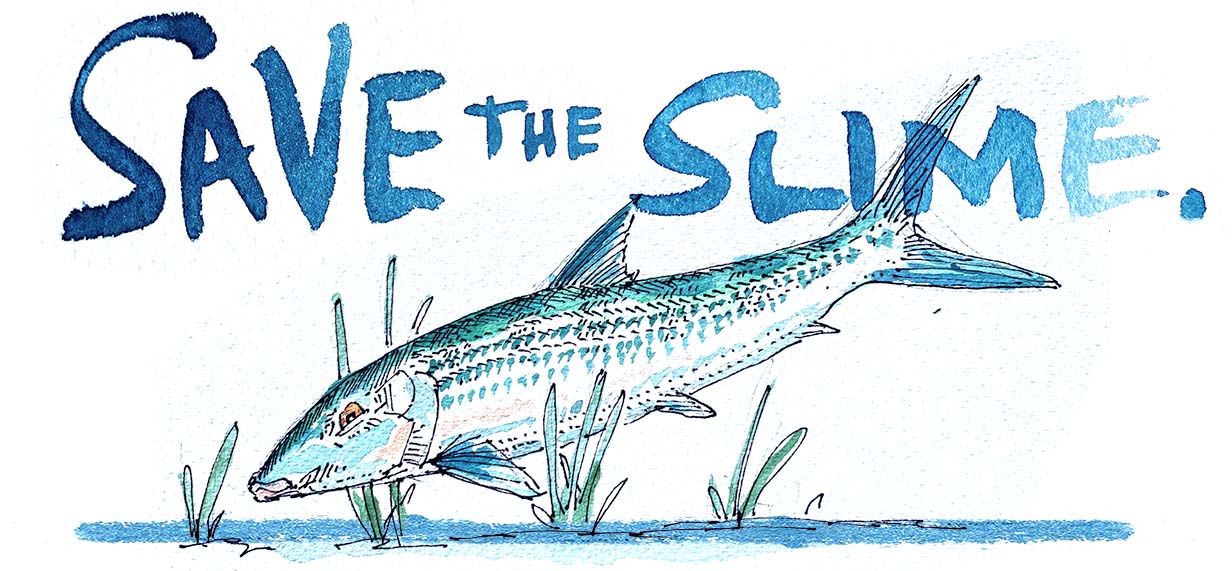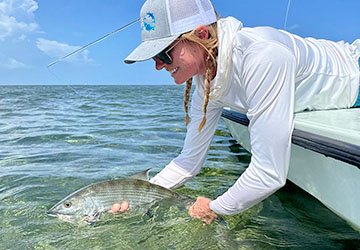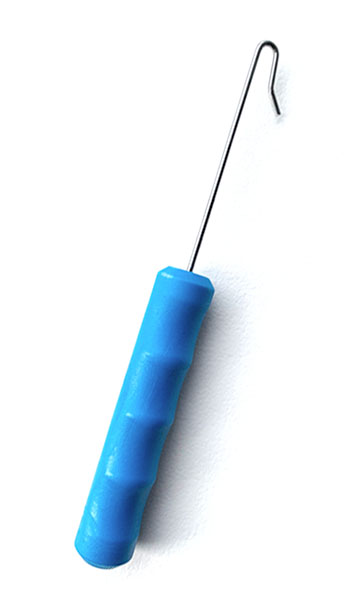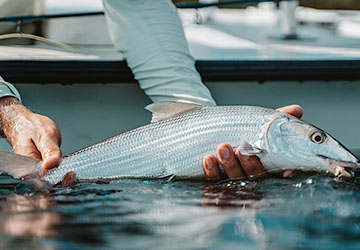
Catching a bonefish can be the highlight of an angler’s life. Properly releasing it is key to ensuring the long-term health and sustainability of the fishery as a whole. We have worked with dozens of the top guides and lodges to develop some best practices to minimize the handling of these special fish.

1) Have a plan. Everyone should be on the same page on how you will record a catch, and be prepared for the photographing process. The first step is to agree on the fish you will photograph (The first of the day? A personal best?) and how it will be photographed. Making sure the camera is out and ready before lifting a fish from the water is key.

2) The ten-second rule. Using clean, wet hands (No gloves or sunblock), gently lift the fish from the water, leaving it over the water. Take the photo, and gently place the fish back in the water. A bonefish removed from the water for longer than ten seconds is six times less likely to survive, so doing this quickly is key.

3) Let him off easy. The use of a dehooking device eliminates the need to handle your catch at all. Leaving the fish in the water, the hook or fly can be quickly and cleanly removed in seconds, letting the fish swim away strong.
HOW TO USE A DEHOOKER: Keeping the line tight to the eye of the hook, place the loop on the end of the dehooking tool over the line, sliding it down the shank of the hook to the bend. Flipping or twisting the hook with the tool, while pulling the hook away from the fish, will disengage the hook, allowing the fish to swim away untouched.

4) Revival of the fittest. Once you are certain the fish is ready, watch for predators, and try not to release a weakened fish where predators might take advantage.
Part of the management of a healthy and growing bonefish population is taking extra care of every fish. This means doing our best to minimize or eliminate the handling when we catch one. Together, we can change the way people count and record catches, and this has already been implemented in some of the most prestigious tournaments in the Florida Keys.

These best practices were developed in collaboration between BTT scientists, fishing guides, and organizations including:


Bonefish & Tarpon Trust
2937 SW 27th Avenue Suite 203
Miami, FL 33133